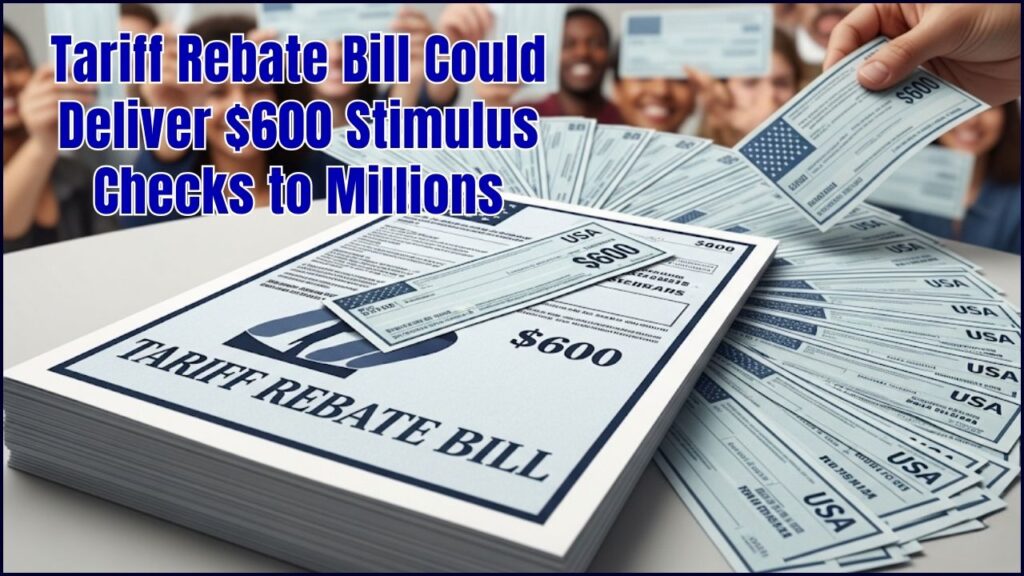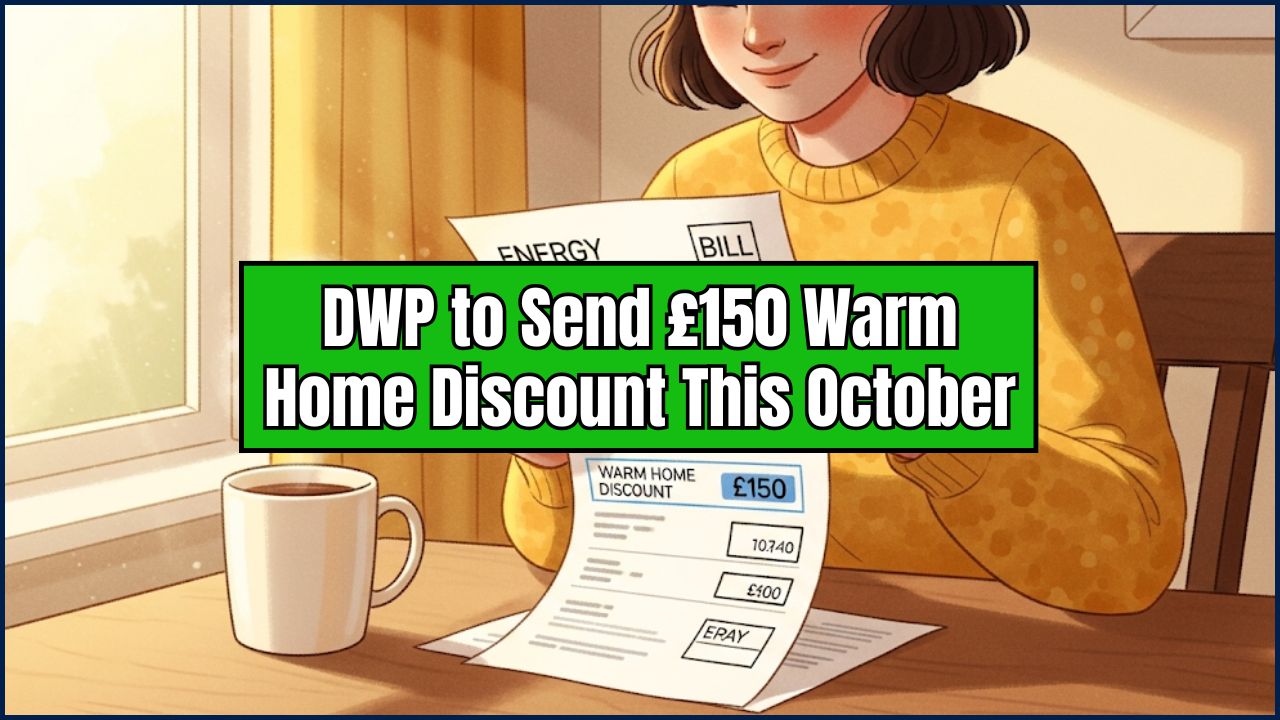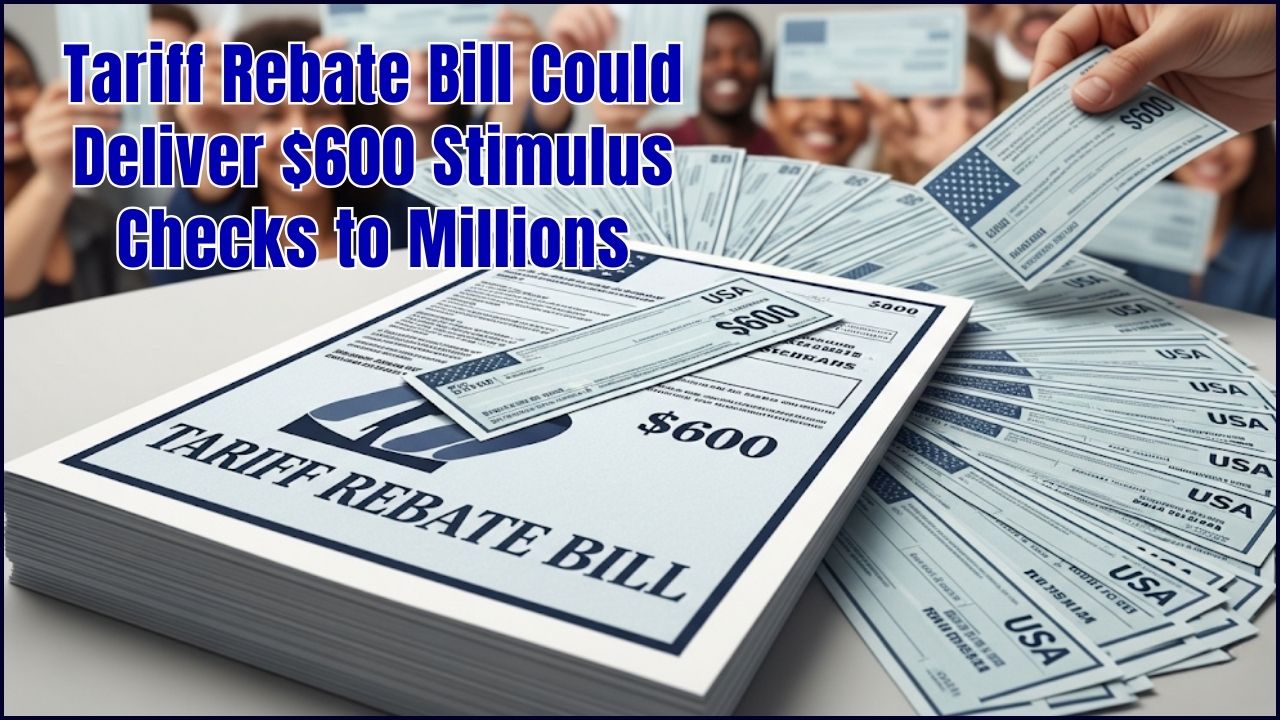If you’ve been hearing chatter about $600 stimulus checks making a comeback, you’re not imagining things. The Tariff Rebate Bill, officially called the American Worker Rebate Act (AWRA), has been making waves in Washington and across social media. This proposal would send out rebate checks of at least $600 per eligible adult and dependent child, funded not by borrowing, but by tariff revenues collected on imported goods.

Think of it like this: when foreign goods get hit with U.S. tariffs, the government collects cash. Instead of keeping it all, lawmakers want to cut Americans a check — kind of like a cash-back rewards program, but for trade policy.
Tariff Rebate Bill Could Deliver $600 Stimulus Checks to Millions
| Feature | Details |
|---|---|
| Bill Name | American Worker Rebate Act (AWRA) |
| Proposed Rebate | $600 per eligible adult and dependent child |
| Family Example | Family of four could receive at least $2,400 |
| Income Threshold (Full Rebate) | Individuals ≤ $75,000; Couples ≤ $150,000 |
| Phaseout | 5% reduction above thresholds |
| Funding Source | U.S. Tariff revenues (not borrowed funds) |
| Status | Still in Congress — not law yet |
| Official Reference | U.S. Senate – American Worker Rebate Act |
The Tariff Rebate Bill could put $600 checks in the hands of millions of Americans, with families seeing at least $2,400. Funded by tariffs instead of federal borrowing, it’s a fresh twist on direct payments. But for now, it’s still a political debate in Congress, not money in your bank account.
If passed, it could mean real relief for working families — but until lawmakers act, the best move is to stay informed, update your IRS info, and keep your financial house in order.
How Did We Get Here? (A Little History)
The U.S. has handed out direct payments before, but always under different circumstances:
- 2001 & 2008 Tax Rebate Checks: Sent to stimulate the economy after downturns.
- 2020–2021 Stimulus Checks: COVID relief payments of $1,200, $600, and $1,400, funded by government borrowing.
The Tariff Rebate Bill is unique because it ties payments directly to tariff collections, not deficit spending. In 2025, U.S. tariffs brought in more than $113 billion , giving Congress a pot of money to play with.
Who Qualifies for the $600 Stimulus Checks?
Here’s the fine print in plain English:
Full Rebate Eligibility
- Single filers: Adjusted Gross Income (AGI) up to $75,000
- Married couples filing jointly: AGI up to $150,000
- Heads of household: Up to $112,500
Example: A family of four with an AGI of $120,000 would get $2,400.
Partial Rebate
If you make more than those amounts, your rebate shrinks by 5% for every dollar above the threshold.
Example: A couple earning $160,000 might still get around $1,900, depending on dependents.
Who Doesn’t Qualify?
- High-income earners above the phaseout.
- Non-resident aliens and those not filing taxes.
Why This Matters for Everyday Americans
Let’s be real — $600 might not sound like a lot when groceries and gas prices are sky-high. But for families juggling bills, that check could cover:
- Two weeks of groceries for a family of four.
- One month’s electric bill in most states.
- Back-to-school expenses for kids (new shoes, supplies, backpacks).
For small-town families, it could feel like a lifeline. For professionals, it’s a modest rebate that might help pay down a credit card or go into savings.
Comparison Table
| Feature | Tariff Rebate Bill (Proposed) | 2021 COVID-19 Stimulus Payments |
| Purpose | To offset consumer costs from new tariffs. | To provide economic relief during a national health crisis. |
| Per-Person Amount | At least $600 per adult and dependent. | Up to $1,400 per adult and dependent. |
| Funding Source | Revenue collected from tariffs. | General government funds and national debt. |
| Income Phase-out | Phased out for married couples earning over $150,000 annually. | Phased out for single filers over $75,000 and married couples over $150,000. |
Regional Impact: Who Benefits Most?
Tariffs don’t hit every state the same way. According to economists:
- Midwestern states (Missouri, Iowa, Ohio) stand to benefit the most because they rely less on imports and more on domestic production.
- Coastal states (California, New York) may feel the pinch of higher import prices but still get the rebates.
That’s why some critics argue this is political strategy: the bill may disproportionately benefit working-class families in swing states, where elections are often decided.
The Politics Behind the Bill
The bill is backed by Sen. Josh Hawley (R-MO) and reportedly supported by Donald Trump. Supporters pitch it as a pro-worker, America First policy.
But opponents argue it’s:
- Political theater — timed to fire up voters in 2025.
- Short-sighted — rebates depend on tariff revenues, which can fluctuate.
- Potentially inflationary — adding cash into circulation could drive up prices.
MarketWatch notes it’s also a strategic move for Republicans, appealing to middle-class voters who feel left out of past tax cuts.
Practical Advice: What To Do If It Passes
Here’s how to be ready if the bill becomes law:
- Verify Your AGI
- Pull your 2024 tax return and check your Adjusted Gross Income.
- Under the threshold? You’re golden.
- Update IRS Records
- Make sure your direct deposit info is up to date at IRS.gov.
- Paper checks take way longer.
- Claim Your Dependents Properly
- Each dependent child = $600 more.
- Double-check your tax return for accuracy.
- Budget Wisely
- Treat the rebate like a bonus, not free money.
- Ideas: Pay off debt, stash in savings, or cover essentials.
- Stay Alert for Scams
- Scammers will pounce the second “stimulus” hits headlines.
- Only trust updates from IRS.gov or Congress.gov.
Pros and Cons of the Tariff Rebate Bill
Pros
- Puts cash in Americans’ pockets without new borrowing.
- Targets working- and middle-class families.
- Could boost consumer confidence.
Cons
- Relies on unpredictable tariff revenues.
- May be politically motivated.
- Provides only short-term relief.
Top 3 Myths About the Tariff Rebate Bill
- Myth #1: It’s a guaranteed check. This bill is not yet law. It still needs to be approved by both the House and the Senate and then signed by the President.
- Myth #2: It will solve inflation. Many economists argue that while the rebate would help some families, the amount is not enough to combat the broader effects of inflation on consumer goods.
- Myth #3: Everyone will get a payment. The proposed bill includes income phase-outs, meaning higher-income households would likely not qualify for the full amount, if they qualify at all.
Public Reactions
Economists are split:
- Supporters say it’s a “smart way to redistribute tariff pain into family relief.”
- Critics call it “a band-aid on a trillion-dollar deficit.”
On social media, average Americans are more direct:
- “$600 won’t change my life, but it’ll help me cover daycare for a week.”
- “Feels like they’re buying votes again, but hey, I’ll take the cash.”
FAQs
Q1. Is the Tariff Rebate Bill already law?
No — it’s still a proposal. Nothing has passed yet.
Q2. When could checks arrive?
Best case: late 2025. Congress is on recess until September.
Q3. Will dependents get $600 too?
Yes, each dependent child adds $600 to your rebate.
Q4. Is it taxable?
Most likely not, based on past rebate checks. But wait for IRS confirmation.












